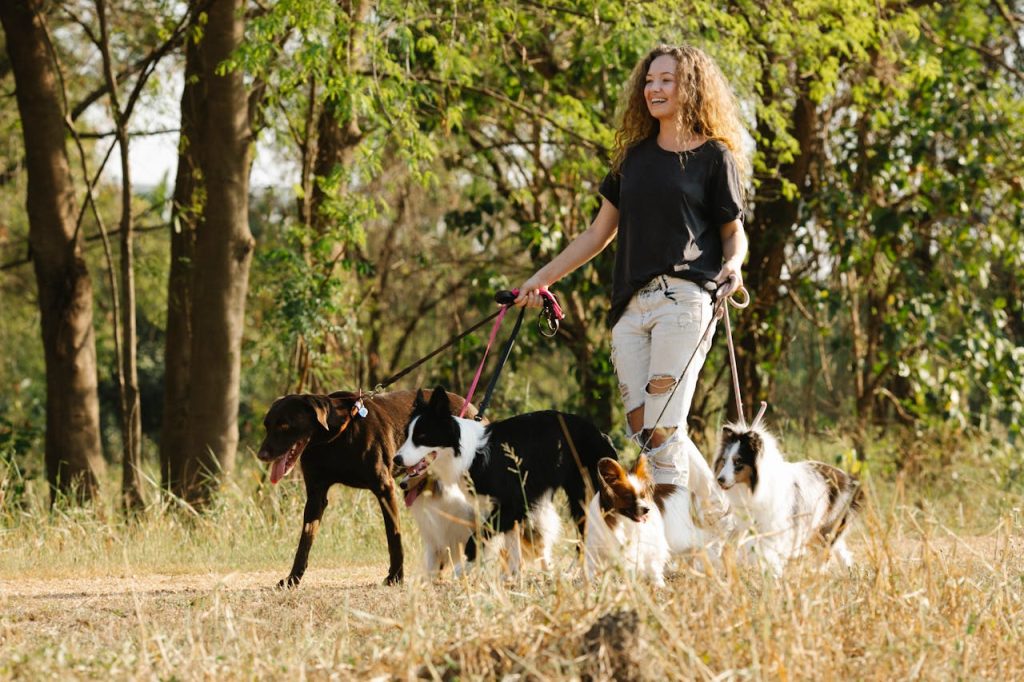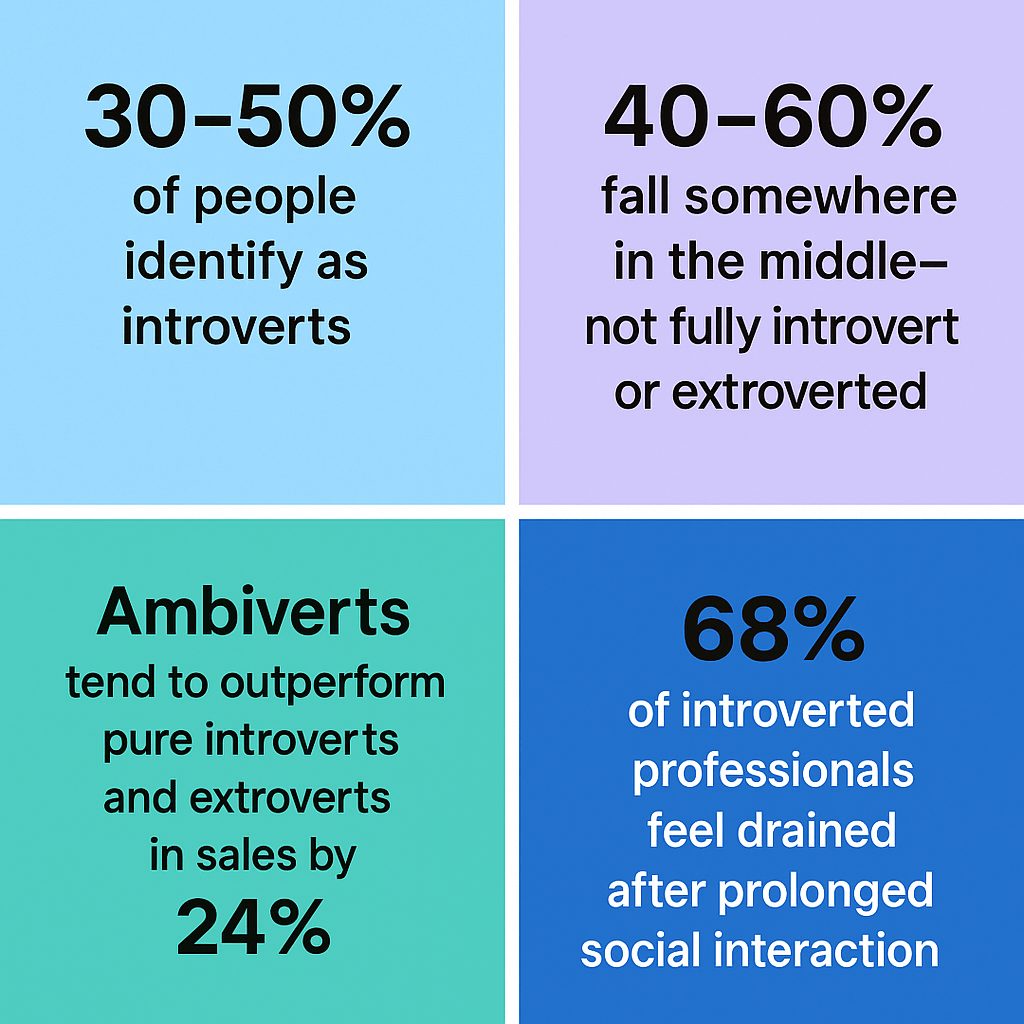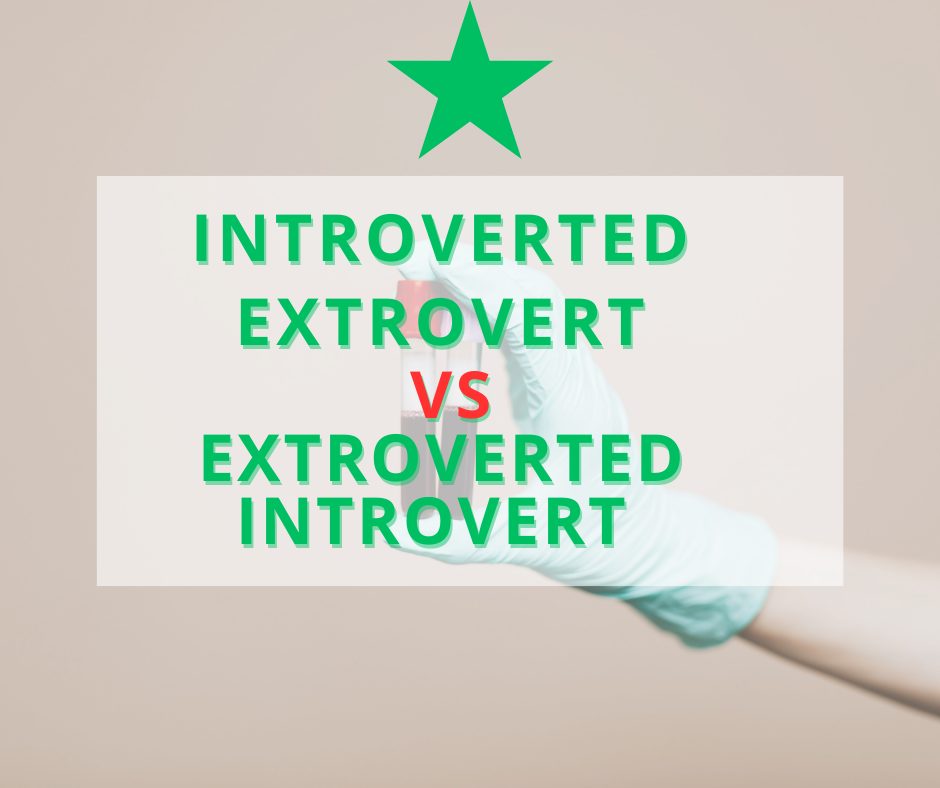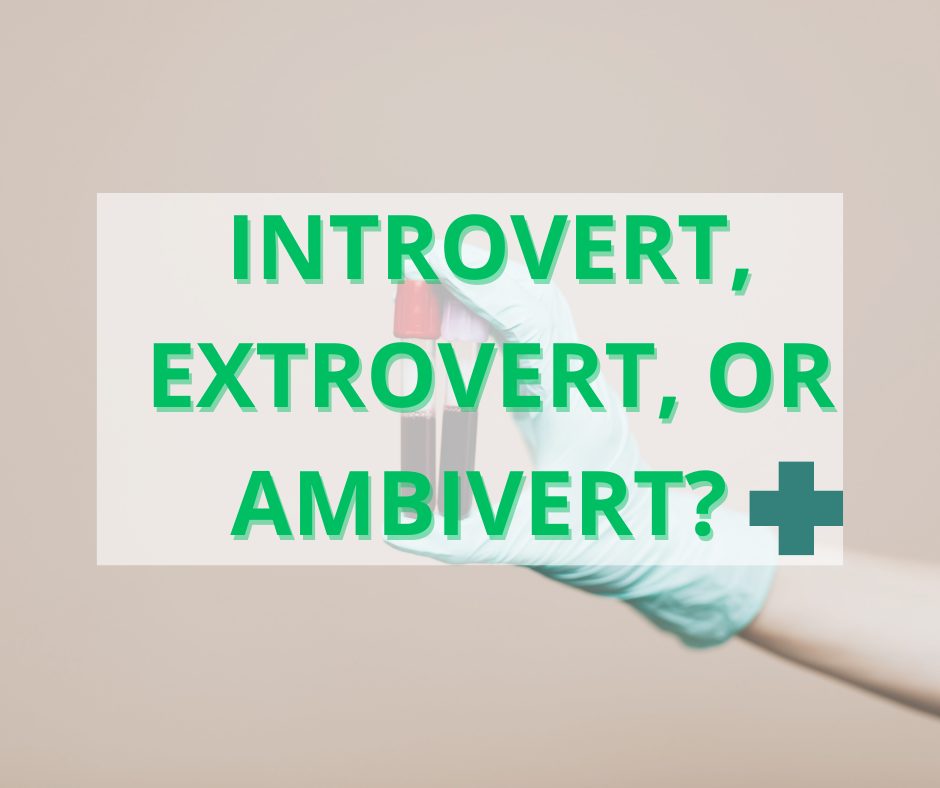Do you ever feel torn between your love for socializing and your need for personal space? You’re not alone. Many people find themselves somewhere between being a pure introvert or extrovert—they identify with both personality types. These individuals are often called introverted extroverts or extroverted introverts, and their personality can change depending on the situation.
In this article, we’ll explore the differences and similarities between these two personality types and how to understand and manage them better. By the end, you’ll be able to recognize whether you lean more towards being an introverted extrovert or an extroverted introvert, and how to thrive with this unique blend of traits.
What Is an Introverted Extrovert?
An introverted extrovert is a person who displays both introverted and extroverted behaviors, often in different situations. They may enjoy being social, going to parties, and meeting new people, but they also crave quiet time alone to recharge their energy. These people might find themselves wanting to hang out with friends but then feeling drained and needing a break afterward.

Key Traits of an Introverted Extrovert:
- Socially Engaged: They enjoy attending social events, meeting new people, and being part of group activities. However, their social energy is limited, and they often feel tired after extended socializing.
- Needs Alone Time: After a social event, they need some alone time to recharge. It’s not that they don’t enjoy being around people; it’s that they need balance and quiet to feel refreshed.
- Adaptable: Introverted extroverts can be quite flexible. They can switch between being the life of the party and retreating to a quiet corner without feeling uncomfortable.
- Balanced Energy: They have a unique balance of energy. While extroverts thrive in social settings and introverts need alone time to regain their energy, an introverted extrovert manages both well, even though they might feel tired or overwhelmed from time to time.

Real-Life Example:
Imagine you’re at a party. You’re chatting with friends, laughing, and enjoying yourself. But after a few hours, you feel that familiar urge to step outside for some fresh air or retreat to a quiet corner. That’s a classic sign of an introverted extrovert. You love the energy of being social, but your battery runs low after too much interaction, and you need time alone to recharge.
What Is an Extroverted Introvert?
An extroverted introvert, in contrast, is someone who may seem outgoing and enjoy participating in social activities, but they often find these experiences draining. They may enjoy engaging with others and joining in on social events, but after a while, they’ll feel the need to withdraw and seek quiet time away from the hustle and bustle.

Key Traits of an Extroverted Introvert:
- Outwardly Social: Extroverted introverts tend to appear outgoing, often joining in on group activities or starting conversations. They don’t shy away from social events, but they may not feel energized by them.
- Easily Overwhelmed: After socializing, they may feel mentally or physically drained, even if they’ve enjoyed the activity. This exhaustion leads them to seek solitude for recovery.
- Quality over Quantity: While they may enjoy meeting people, they tend to prefer deeper, one-on-one interactions rather than large gatherings.
- Quiet Recharges: After social events, they often need solitude to reflect and regain their energy. They may not have the desire to be alone all the time, but they do need more personal time than they might show on the surface.

Real-Life Example:
You might attend a family gathering where everyone is chatting and laughing. At first, you’re engaged, making jokes and catching up with relatives. But after a few hours, you start feeling mentally exhausted. Even though you enjoy being around people, you need some time alone in your room or outside to recover. This is a clear sign of an extroverted introvert—someone who seems extroverted but needs to retreat into themselves to regain energy.
Introverted Extrovert vs. Extroverted Introvert: What’s the Difference?
While the terms may seem similar, there are key differences between an introverted extrovert and an extroverted introvert. Let’s break down the distinctions:
- Introverted Extrovert: This person enjoys being social and attending events but requires quiet time to recharge. They are energized by interactions but not for extended periods. They can easily switch between socializing and retreating to recharge.
- Extroverted Introvert: These individuals may appear outgoing and participate in social events, but they find these activities draining. They are often introverted at their core but may engage in extroverted behavior when necessary. Their energy dips quickly during socializing, and they need time alone afterward.
The main difference lies in how they manage their energy:
- Introverted extroverts thrive in social situations but experience energy dips that require a recovery period.
- Extroverted introverts might look outgoing but feel the effects of socializing more quickly and often prefer deeper, more meaningful interactions.

How to Balance Being Both Introverted and Extroverted
Living as an introverted extrovert or extroverted introvert can be challenging, but there are ways to balance these traits in a healthy way. Here are some strategies to help you manage both aspects of your personality:
- Understand Your Energy Limits: It’s important to recognize when you need to recharge. If you’ve been socializing for a while and start feeling drained, it’s okay to step back and take some time for yourself.
- Plan Social Events Wisely: Be mindful of how much socializing you’re doing. If you have a busy social schedule, make sure to schedule some downtime afterward to avoid burnout.
- Embrace Your Dual Nature: There’s no need to fight your personality traits. Embrace both your introverted and extroverted sides. Understand that sometimes you may feel more social, and other times you’ll need some quiet time. Both traits make you unique and adaptable.

- Set Boundaries with Others: If you’re an introverted extrovert, you may need to explain to your friends or family that you enjoy spending time with them, but you also need alone time to recharge. Setting clear boundaries helps others understand your needs without feeling guilty.
- Find Your Balance: Striking the right balance between social interaction and solitude is essential. Experiment with different activities and schedules to see what feels best for you. For example, you might decide to attend social events but limit the time spent there, allowing you to still enjoy the experience without feeling drained.

Psychological Backing: MBTI & Beyond
In the MBTI (Myers-Briggs Type Indicator) system, personality types are built using cognitive functions like:
- Introverted Feeling (Fi)
- Extroverted Thinking (Te)
- Introverted Sensing (Si)
- Extroverted Intuition (Ne)
For example, someone who leads with Introverted Feeling (Fi) may appear quiet and reflective, but their auxiliary function could be Extroverted Intuition (Ne) — making them curious, talkative, and spontaneous in the right situations.
Understanding these functions can help explain why someone can be both shy and social, private but friendly, depending on the environment.

Why Knowing the Difference Matters
Knowing whether you’re an introverted extrovert or an extroverted introvert can:
- Help you choose better social settings
- Improve your work-life balance
- Strengthen your relationships
It can also explain why traditional introvert vs extrovert labels don’t always fit.
💬 “I thought I was an extrovert my whole life, but now I realize I just needed alone time more than I expected,” — a common insight from readers like you.
Conclusion
Understanding whether you are an introverted extrovert or an extroverted introvert can help you better manage your social interactions and personal energy. Both personality types have unique traits, and recognizing these traits is the key


